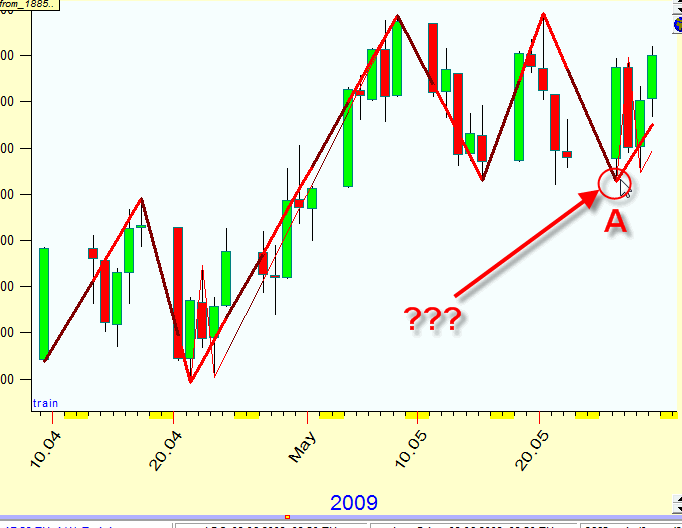
Filtered Zigzag
Filtered Zigzag (FZ) is the best indicator to reveal turning points that I know. This is how it looks like:

Usually zigzag is applied to model an ideal trading strategy - because zigzag reveals turning points with mathematical preciseness exact reveals turning points. This is a sample of trading strategy based on 5% zigzag:
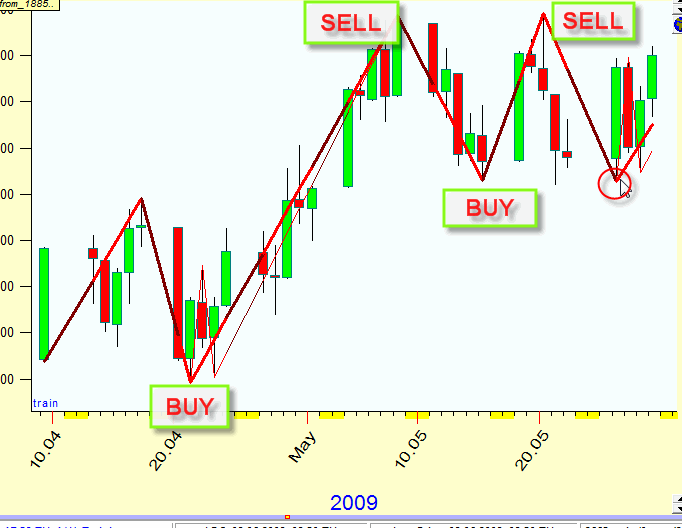
I would use the filtered zigzag in all my research putting away all other indicators of Technical Analysis, if there would not exist one tricky nuance for zigzag.
ZIGZAG IS A FUTURE LEAK INDICATOR.
Look at the previous example once again:
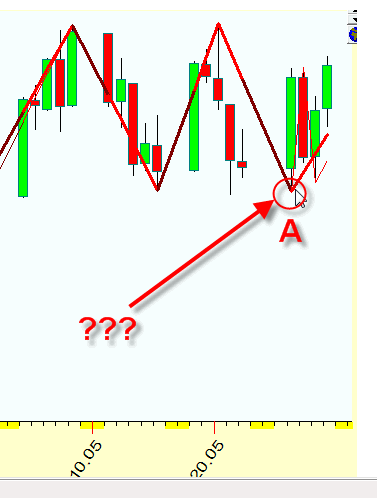
The question is: "is point A in this example (May 26,2009) a real turning point?"
To make ourselves sure that it is a turning point, we need to have at least 5% up trend movement since May 26,2009 (confirmation of the up trend). However we do not have so far this confirmation (we use for this research the data till the end of May). If for instance the stock market starts down trend movement on or after June 1, 2009, the point A will not be a bottom turning point in regards to 5% zigzag.
In other words, we can be sure that some point is a real turning point only if we have confirmed up trend (for a bottom turning point) or down trend (for a top) movement. This sad fact drastically decreases the forecast ability of any zigzag indicator; it actually indicates the turning point when this fact is already obvious for everybody.
Keeping this in mind, we still can apply zigzag indicators for long term analysis (i.e. when we analyze many zigzag swings). For example it can be used in Composite module; define there DETRENDED ZIGZAG this way:
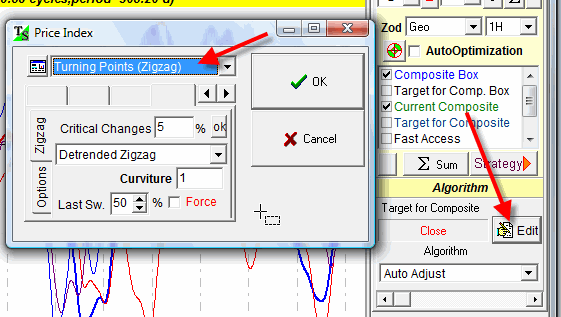
This is how it looks like (the blue diagram):
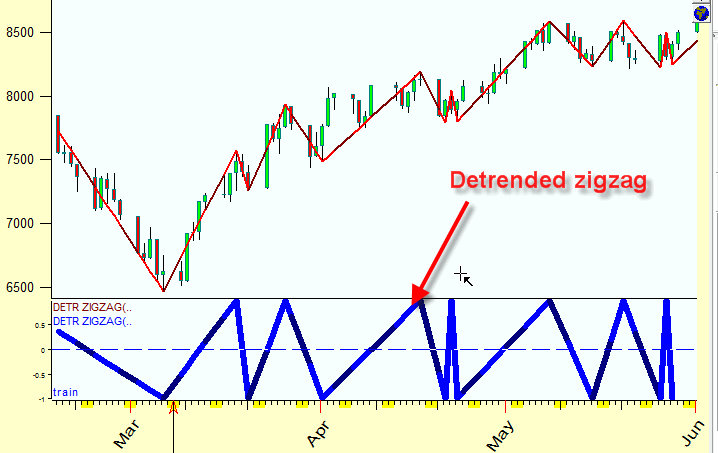
However I do not recommend using the detrended zigzag in Neural Network module as the uncertainty with the last turning point can spoil any forecast when the new piece of the price history comes.
Also pay attention there to the "Last swing confirmation" parameter:
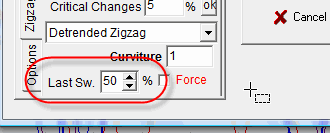
The program uses a portion of the opposite movement to confirm the last swing; in our example, we use not the whole 5% opposite movement but 50% of 5% =2.5% opposite movement only. This approach allows to reveal turning points earlier, though we need to understand the risk associated with this approach as well. If you set the last swing to 100%, it will not have any practical sense - the program will confirm the last turning point by opposite 5% (in our example) movement that really has happened. So we set the less value for the last confirmation swing.